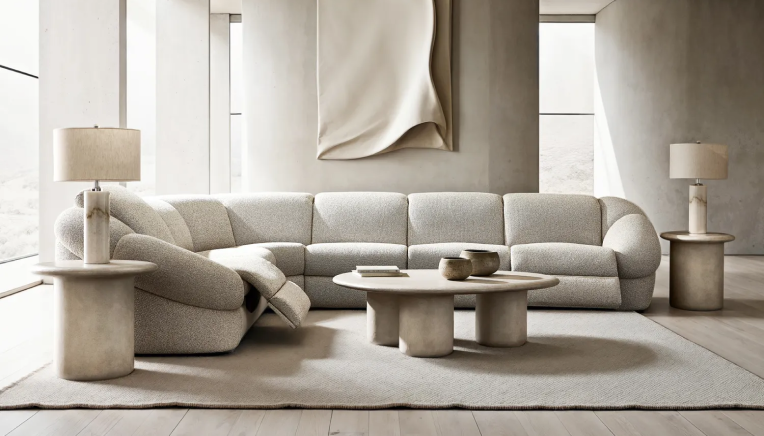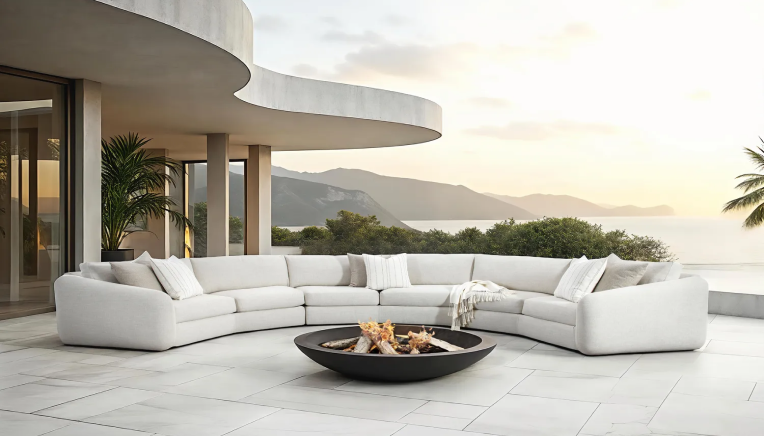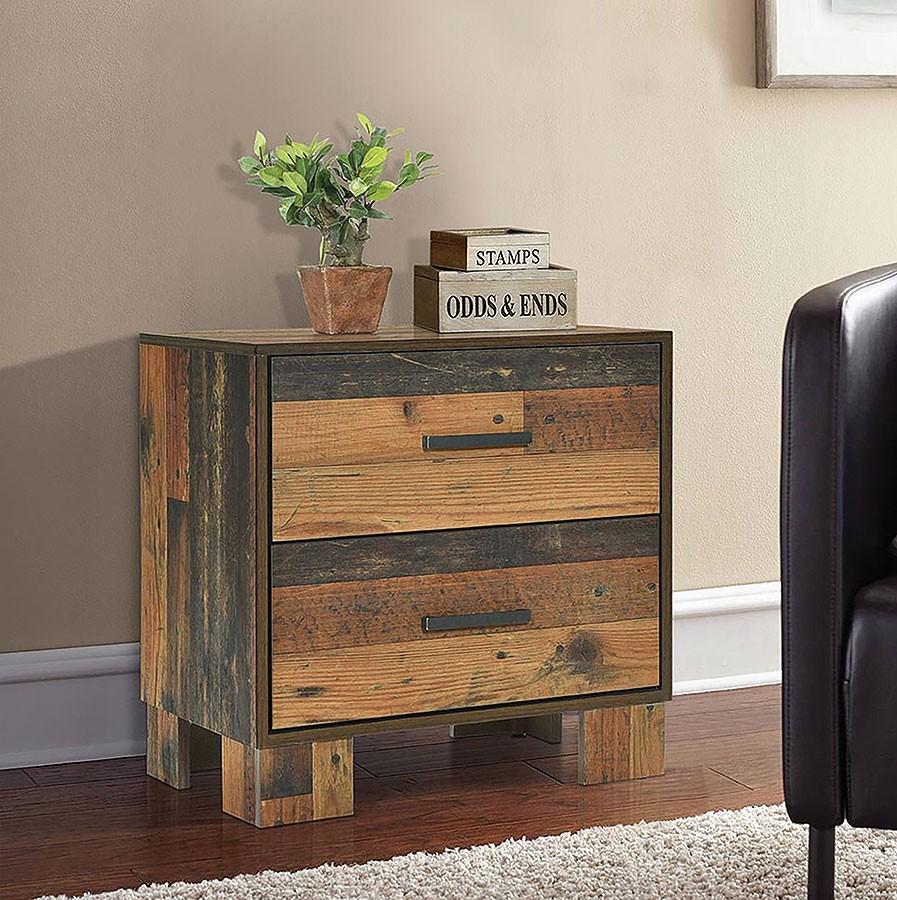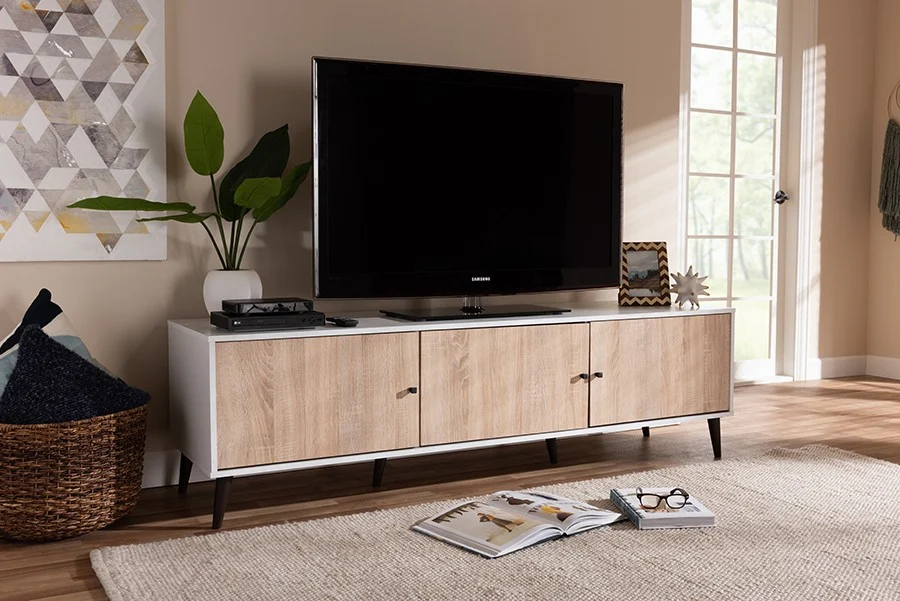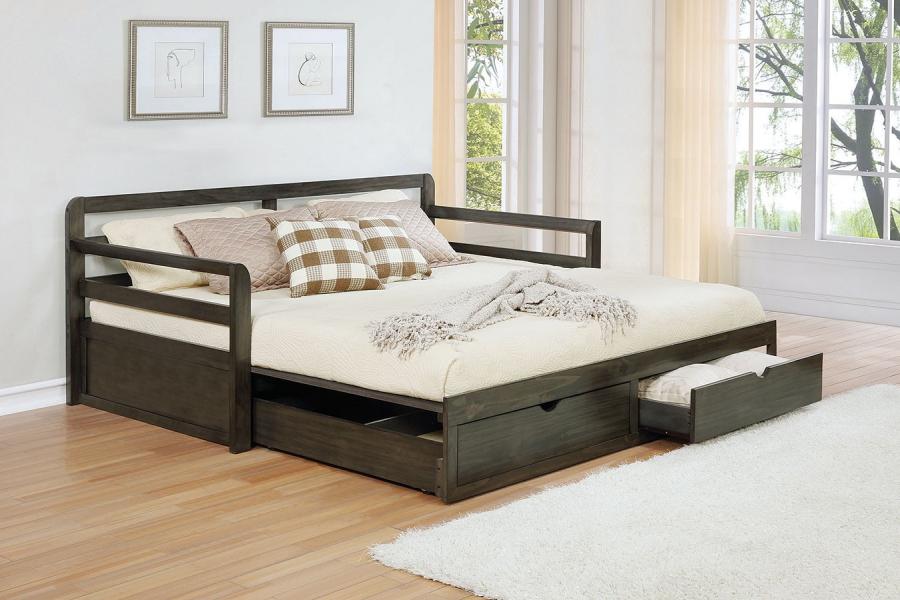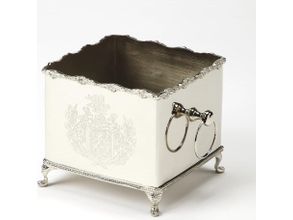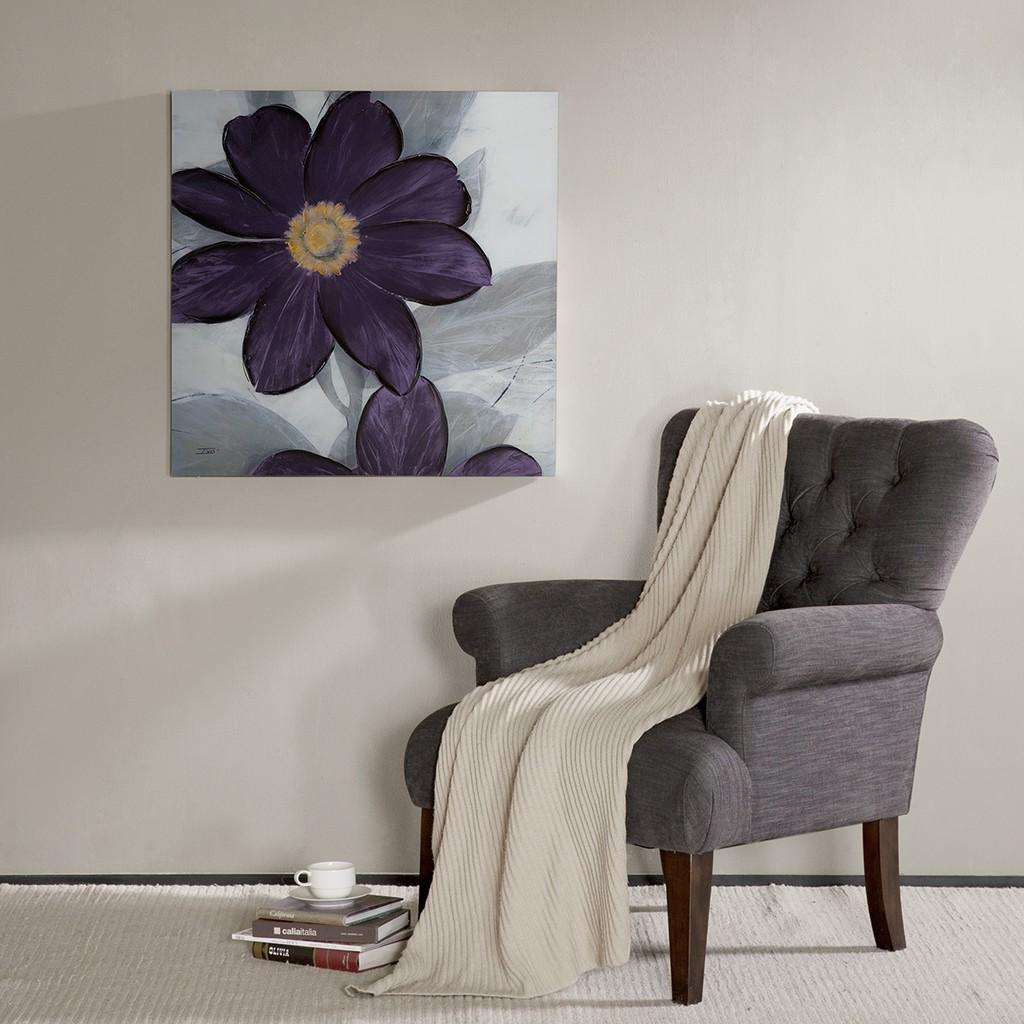
Are you looking to redesign your home? Well, you're in luck! 2024 is here, and it is time to start thinking about the new interior design trends that will be all over this year.
From bold colors, interior design options and unique textures to innovative furniture pieces, there are plenty of inspiring ideas for you to explore.
So what's out for 2022 to accommodate the top 2024 interior design trends? Gone are the days of muted colors and minimal patterns. Now, bold colors and bright patterns are in! You can make a statement with bold colors like dark green or yellow or create a lively atmosphere with colorful, vibrant ornaments. This trend is perfect for those who want to spruce up their home without making significant changes.
Mixing textures has been popular for a few years, but it's still going strong into 2024. The key to this trend is finding the right balance between different materials, such as wood and metal or fabric and leather. This can create an interesting visual texture that turns heads correctly.
Mixed metal finishes are also set to be big this year. This trend is about mixing different metals in one space through hardware or lighting fixtures for a cohesive look. Gold, silver, copper, brass — all these metals can work together if done correctly! It's about finding the right balance between all the different colors so that everything looks harmonious yet still stands out on its own merits.
Organic materials like wood, stone, wool, cotton, hemp, bamboo and more have been trending in interior design for several years, but they remain popular in 2024 as well!
Natural stone surfaces like granite and marble have been popular for years and will continue to be popular in 2024 — albeit with a twist. Instead of using natural stone surfaces on countertops and floors, designers also increasingly use them on walls and furniture. The result is a more luxurious look that adds texture and depth to any room in your home.
These materials provide a warm and inviting feel while being environmentally friendly. Plus, they add an element of visual interest that can't be achieved with other materials.
Want to learn more? Read on to learn more about four of the hottest interior design trends for 2024.
Interior Design Trends 2024
Are you looking to stay ahead of the curve regarding interior design trends? You've come to the right place. Here, we'll look at four trends expected to dominate the market in 2024.
From biophilic home design to textural layering to the top interior design color trends 2024 needs to know about, these trends will give your space a modern feel without sacrificing functionality or sustainability.
1. Biophilic Design: The Importance of Nature in Interior Design
Nature brings us peace and tranquility, so why not incorporate it into our living spaces? That's exactly what biophilic design strives to do. Biophilic design home trends combine nature and interior design to create a harmonious living space that is both beautiful and calming.
Biophilic design is an approach to interior design that seeks to merge natural elements with the built environment. Through this approach, designers strive to bring nature indoors by incorporating elements such as plants, natural materials, sunlight, and other features associated with nature into a home or commercial space.
The idea behind the biophilic design of bedrooms and other living areas is to give people a deeper connection to nature while providing an aesthetic appeal.
Biophilic interior design has many benefits for both homeowners and business owners alike. On an aesthetic level, incorporating natural elements into your space can create a sense of calm and relaxation. Natural elements like plants can add color and texture to your living space, enhancing the overall look of your home or office.
Incorporating natural elements into your interior biophilic design space can also provide physical health benefits. Studies have shown that contact with nature can decrease stress levels, improve concentration, reduce fatigue, and even boost creativity.
A bonus is that integrating these elements into your interior design doesn't have to be expensive. Many biophilic design elements are simple DIY projects that are easy on the wallet!
If you're interested in exploring the benefits of biophilic design for yourself or your business, there are many ways to get started. So what are some biophilic design examples? Let's take a closer look.
Adding Indoor Plants
One of the best ways to implement a biophilic design in your home is through indoor plants.
Indoor plants come with a myriad of benefits, both aesthetic and practical. First, they add color and life to a room, making it more vibrant and alive.
They bring nature indoors, helping us connect with the natural world even when stuck inside during winter or while working from home. They can help purify the air by absorbing pollutants and excess carbon dioxide from our homes. And finally, studies have shown that indoor plants can reduce stress levels and increase productivity by up to 15%.
When it comes to choosing which type of plant you want for your home, there are hundreds of varieties to choose from:
- If you want something tall, add an Areca Palm or Dracaena marginata.
- If you're after something more petite, try Chinese Evergreen or Pothos.
- If you want something unique, try String of Pearls or Snake Plant
- And finally, if you want something flowering, try Orchid or Bromeliad
You can even opt for a terrarium of succulents or a hanging basket, neither of which will take up too much space.
Try Natural Materials
Biophilic design is all about incorporating elements of nature into your home or workspace. It's about bringing plants alone and using natural materials to create a soothing atmosphere. Raw materials are the way to go if you want to feel connected to nature while still staying in the comfort of your own home.
Natural materials such as wood, stone, and bamboo bring warmth and texture that no other materials can match. Not only do they look great, but they have many practical benefits too.
Wood is a great insulator against sound and temperature, so it will help keep your space comfortable all year round. A solid wood dining table is a simple and effective way to keep things natural.
Stone is known for its durability, making it an excellent choice for flooring or countertops. A stone dining table is a wonderful choice. Bamboo is lightweight yet strong, perfect for furniture or accents that you want to move around easily.
When shopping for natural materials, there are a few things to remember. First and foremost, make sure you're buying from a reputable source – ask questions about where the material comes from and how it was processed, if possible.
Consider what material would work best in your space – wood might be best for furniture, while stone could be better suited for flooring or countertops. And finally, don't forget about sustainability – look into whether the material is renewable or if there are any environmental considerations when harvesting or processing it.
Highlight the Outdoor View
Highlighting your outdoor view can bring a sense of calm and relaxation into your space by connecting you directly with nature's beauty. This connection helps reduce stress levels, improve mental clarity and focus, and promote well-being.
It also has been shown to boost productivity and creativity, so highlighting your outdoor view can be an effective strategy if you work from home or are looking for a creative outlet.
There are several ways to highlight your outdoor view as part of the biophilic design in your home. You can start by using light colors that complement the natural tones found outside - like pale blues, greens, grays, and whites - for both paint colors on walls and furniture pieces throughout the room.
Natural wood furnishings will also help create a sense of harmony between indoors and outdoors. You may also want to consider installing large windows or glass doors that open onto a balcony or patio area so that you can enjoy the outdoors without leaving the comfort of your home.
Finally, don't forget about fabrics! Choose lightweight curtains in earthy tones that let plenty of natural light filter through while providing privacy when needed. With these simple tips in mind, you can easily create a beautiful living space inspired by nature's wonders!
Create an Indoor-Outdoor Connection
Biophilic design is all about connecting with nature, even when you're indoors. An indoor-outdoor connection helps make this happen by blurring the line between the indoors and outdoors; instead of having two distinct locations, they become one. This can have a calming effect on both the mind and body while creating a more peaceful atmosphere in your home.
Natural elements such as plants can help clean the air in your home while making it look beautiful at the same time.
Creating an indoor-outdoor connection doesn't have to be difficult or expensive. All you need is a few simple steps to get started!
First, consider adding natural elements such as plants and greenery throughout your space for a pop of color to make your home feel more inviting.
Next, think about opening up walls or windows so that more light enters the space—this will help create a seamless transition between indoors and out.
Finally, consider adding outdoor furniture (like chairs or benches) near windows or doorways so that you can easily step outside for fresh air!
2. Textural Layering: Creating Depth and Interest in Your Space
Interior design trends come and go, but one trend that has been around for years is textural layering. It's a style of interior design that adds visual interest to a room by combining various textures and materials.
Textural layering can create an inviting atmosphere in any homeroom, from the living room to the bedroom. While textual layering is one of the top living room interior design trends 2024 will want to embrace, it can be done in any home area.
Textural layering is mixing different textures in one space to create depth and interest. It combines fabrics, wood, metals, stone, glass, and even paint colors. The goal is to mix different materials to create a layered effect that will draw attention to certain areas of your home or draw the eye from one place to another in an exciting way.
Adding texture to your space creates visual interest. It makes it more inviting – especially important if you are entertaining guests or simply want your home to feel cozy and comfortable. Textures also provide warmth; they help soften hard edges and make rooms more inviting by adding softness.
Be Thoughtful With Your Wall Coverings
There are many ways to incorporate textural layering into your home, but one of the most effective ways is using textured wall coverings.
The design options are endless, allowing you to choose something that will fit with any existing decor or other elements in the room. Not only do embossed wallpapers add texture to a space, but they also add visual interest, which can make all the difference in creating an inviting atmosphere.
For smaller spaces or if you're looking for something more unique than wallpaper, consider incorporating real materials like stone or wood for your accent wall.
Stone walls have been popular for centuries and bring a timeless quality that never goes out of style. Wood accents offer versatility since such wide varieties and colors are available. You can find something that will fit almost any aesthetic or color palette.
Both wood and stone can easily be used together with other materials like paint or tiles without any issues, making it easier than ever before to create stunning accent walls in any room of your home.
Create a Sense of Contrast
Creating a sense of contrast effectively balances space and stays on trend with 2024 design trends. Visual interest and shape can be incorporated into the look by layering textiles, defining elements, and playing with the scale of pieces. It works particularly well in busy family homes or brings character to minimalistic spaces.
Ensuring the colors you select don't will help pull together your composition, but feel free to mix things up! By building on the juxtaposition of elements, your design scheme will stand out from the ordinary and feel unique.
Layer Rugs, Pillows, and Other Accessories
Once you've chosen your wall coverings and added them to the mix, don't forget to add finishing touches like rugs and pillows. Rugs with interesting patterns and textures can tie everything together while bringing even more depth into the room.
Pillows are another great way to add texture - try mixing different colors and fabrics for a truly unique look. Once everything is in place, sit back, relax, and enjoy the new atmosphere of textural layering!
Even Consider Layering the Lighting
You may want to think about layering lights of different intensities and colors to make certain areas more visually dynamic – for instance, using low-hanging decorative accent lights to punctuate spots that need a pop of color.
Bright spotlights and soft string lights provide intriguing contrast while still allowing other room elements to stand out. Textual layering through lighting can leave your room feeling vibrant and alive with its character – you just need to find the creative combination that speaks for itself!
Create a Vignette
This technique combines different pieces, like paintings, sculptures, or other artworks, combined with plants or other furnishings that evoke the desired ambiance. The trick is creating an overall look that stands out while maintaining a balance between the pieces and their surroundings.
Designers can use layering techniques to carefully arrange items that draw attention and ensure the focus stays on the textures and designs within each element. Textures such as velvet, fur, and stone can contrast many materials like wood, metal and concrete when accessorizing a space.
3. Bold Colors: Making a Statement with Bold and Rich Hues
If you've been keeping up with interior design trends, you'll know that bold and rich hues are making a statement in 2024. This leading trend in interior design color trends 2024 allows homeowners to express their style and personality by using bright and eye-catching colors.
The use of bold colors creates an immediate impact on any space. Not only do they grab people's attention, but they also give off a vibrant energy that brings life to any room.
Homeowners are no longer afraid to experiment with shades of blue, pink, or yellow, as these colors now serve as easy ways to turn any dull space into an exciting one. With bold colors, your room will be transformed into a unique reflection of yourself!
Bold colors are not only aesthetically pleasing but can also be used as an effective tool for encouraging productivity.
Studies have shown that certain shades of color can directly affect our moods and emotions. For example, while red stimulates activity and alertness, green promotes relaxation and calmness.
Therefore, if you want to energize your workspace or create a soothing atmosphere in your living room, you can use specific hues to achieve those desired effects!
Add Some Bold Accents If You're Hesitant to Dive In
If you're hesitant to utilize bold colors throughout your home fully, adding bold accent pieces to your existing decor is an ideal way to get on board without too much commitment.
Adding a bold wall color, like red or green, could be just the thing to give your room an eye-catching vibe while still keeping its traditional feel. Or, if you want something small but effective, investing in something like a velvet accent chair would bring subtle vibrancy and texture that will help give any living space an extra spark of life.
Consider the Whole-House Flow
We see the transition from subtle and light hues to more audacious and unique color schemes to make an impactful statement.
The key emphasis is using bold and rich hues within each room or floor to create a cohesive look throughout your home by considering the whole-house flow.
These colors can be used for your walls, furniture, and accessories, focusing on creativity and thinking out of the box to have a modern take on any design style. Be sure to go brighter, as there is no room for shyness regarding this trend.
Use Different Tones of the Same Color
Designers recommend mixing different tones of the same color to make a statement in decorating, especially if you want to update a room without going too far outside your comfort zone.
This tonal approach allows for subtle depth within rooms that can become striking when thinking outside the box. One possible example? Moody blue! Painting walls within shades of deep navy, baby blue, and midnight blue can add immediate impact plus an element of sophistication in any room or office space.
Give Stripes and Patterns a Try
To elevate a design look in 2024, consider combining these colors into stripes or patterns. Visual appeal abounds when colors are arranged aesthetically pleasing - try adding a bold stripe pattern to your walls or furniture to give a space an instant style refresh.
You can also combine several light and dark colors to create alluring geometric patterns. Using colors boldly conveys confidence and strength, so why not bring this trend into your home and make an impact?
Add Jewel Tones
Jewel tones are increasingly used in home decor, fashion, and other design elements that make a distinct impression. Whether it's an emerald green velvet chair or an extended-length statement earring in ruby red and sapphire blue, it's time to bring out the deep, layered tones of the jewelry box for interiors and outfits alike.
Sumptuous burgundies, velvety purples, warm amber oranges—mixing these daring colors add glamor to any look and provides drama to any space.
Try Adding Bold, Colorful Artwork
You can instantly make a space feel bright and inviting by implementing large, colorful art pieces. You can choose traditional paintings or photographs to add drama and interest to the room. Abstract art will open up creative possibilities for creating a beautiful space that leaves an inspiring impact.
From bold walls to striking furniture pieces, adding bursts of expressive color offers plenty of opportunities to enjoy while keeping up with the newest designs trends
4. Sustainability: The Future of Interior Design
Have you ever wanted to make your home more sustainable? You may have heard of sustainability in the context of climate change, but it can be challenging to know where to start when it comes to making your home more sustainable.
Sustainability in interior design is all about making environmentally conscious decisions when decorating your home. This means looking for furniture, fabrics, and other items made from recycled or reclaimed materials. It also means choosing nontoxic, non-polluting products such as low-VOC paints and natural fibers like wool or cotton over synthetic options like polyester or nylon.
Of course, interior design sustainability also involves proper ventilation to ensure that fresh air circulates throughout the home and reduces indoor pollutants like carbon dioxide or volatile organic compounds.
Fortunately, you can take a few simple steps to help make your home greener and more sustainable.
Use Eco-Friendly or Responsibly Sourced Materials
One way to incorporate sustainability into your home is by using eco-friendly and responsibly sourced materials. Consider using furniture made from recycled materials. You can also look for fabrics made from upcycled materials like cotton scraps or even old denim jeans! Not only do these pieces add character to your home decor, but they also help reduce waste in landfills.
Upgrade Your Lighting and Appliances
Another way to be more sustainable in your home is by using energy-efficient lighting and appliances. Consider using LED lights and energy-efficient appliances like an Energy Star Certified Refrigerator.
Look for nontoxic, non-polluting cleaning products as well as energy-efficient water heaters and air conditioners for further savings on electricity bills.
Use Space Wisely
Maximizing space usage should also be considered when designing a sustainable interior space. This includes utilizing vertical spaces like shelves or cabinets and incorporating multi-functional furniture pieces that serve multiple purposes, such as an ottoman with storage or a daybed that doubles up as a couch.
Furthermore, using natural light wherever possible instead of electric lights during daytime hours can significantly reduce energy consumption while adding brightness to any room in the house.
Use Nontoxic, Non-Polluting Products
Another way to practice sustainable interior design is to use nontoxic, non-polluting products whenever possible. It includes paints with low VOCs (Volatile Organic Compounds), which are gaseous pollutants that cause health problems if not properly ventilated. Consider choosing natural fibers like wool over synthetic options such as polyester or nylon when selecting fabrics for your cushions and curtains – they are better for the environment and more comfortable!
Again, be sure to check out energy-efficient appliances such as LED lights and Energy Star-certified refrigerators – these will help keep energy consumption down while still providing you with all the amenities you need in a modern home.
The Takeaway
Whether looking for bold color trends or unique textures, these four interior design trends will inspire your next home renovation project!
By incorporating these elements into your redesign plan, you can create a modern yet comfortable atmosphere for yourself and your family that will last for years.

